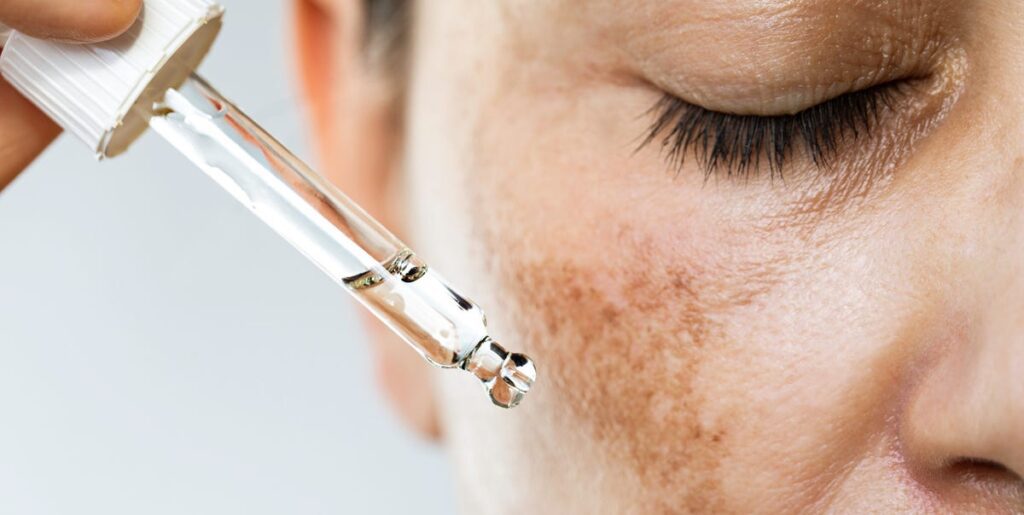Understanding Melasma: Insights and Treatment Options
For those who closely monitor their skin’s changes, even the slightest shifts can be noticeable. Perhaps you’ve observed an increase in hormonal acne or more dry patches than usual. However, when it comes to hyperpigmentation, subtle changes can often be overlooked until they significantly affect the overall appearance. One prevalent cause of uneven skin tone is melasma.
Melasma is surprisingly common; studies suggest that between 1.5% and 33% of individuals between the ages of 20 and 40 might experience it, according to the Cleveland Clinic. Still, it can be challenging to determine if your symptoms stem from melasma or another condition. To clarify this matter, we consulted with dermatologists who shed light on the causes, management strategies, and how to identify melasma.
What Causes Melasma?
Melasma is a persistent skin condition characterized by dark patches on the face due to excessive melanin production, explains Dr. Gina Charles, a skincare-focused family physician. It typically manifests on the upper lip, cheeks, and forehead. While the exact cause remains unclear, there is a strong correlation between melasma and factors like sun exposure and hormonal changes.
Who is Most Affected by Melasma?
While anyone can develop melasma, research published in the Journal of Clinical and Aesthetic Dermatology found that it is particularly prevalent among women and those with darker skin types living in regions with high UV radiation. Due to its hormonal influences, it often appears in women of childbearing age, especially those who are pregnant or using hormonal contraceptives. This is likely why the condition is often referred to as the “mask of pregnancy.”
How is Melasma Diagnosed?
Diagnosis typically occurs during a clinical examination. According to Dr. Charles, a Wood’s Lamp examination is used to confirm melasma and assess pigmentation depth. This process utilizes ultraviolet light to make specific cells change color or glow. Medical professionals may also review your medical history and use dermoscopy or biopsy for a confirmed diagnosis.
The Best Ways to Treat Melasma
If you’ve been diagnosed with melasma or suspect you might have it, you’re probably wondering about treatment options. While there’s currently no cure for melasma due to the unknown specific causes, several effective management strategies can help.
1. Wear Sunscreen Daily
Regardless of your activity—be it outdoor adventures or office work—applying sunscreen is crucial for treating and preventing melasma. Dr. Jessica Dowling recommends using tinted mineral sunscreen over chemical options for optimal protection. Mineral sunscreens contain ingredients like zinc oxide and titanium dioxide, while tinted formulas can also include iron oxide. These components create a protective barrier against the sun’s rays, particularly those that can exacerbate melasma.
2. Use a Retinol Cream
Retinol promotes cell turnover, aiding in the lightening of pigmentation. As Dr. Charles mentions, it can be utilized alone or as part of combination creams for melasma treatment. However, consult with a dermatologist if you have sensitivities to ensure it’s a suitable option for you. And remember, retinol can increase sun sensitivity, underscoring the importance of sunscreen.
3. Explore In-Office Treatments
Laser facials and chemical peels containing alpha hydroxy acids are popular choices for in-office melasma treatments. Dr. Charles explains that Nd:YAG lasers and Pico lasers effectively target the melanin deposits associated with the condition. Combining these methods with other treatments may simplify melasma management.
4. Consider Medication
Your healthcare provider may recommend low-dose melatonin as it inhibits tyrosinase, an enzyme that supports melanin production, thereby lowering pigmentation levels. Additionally, prescription creams containing hydroquinone may be suggested. Often prescribed with topical steroids and retinoids, these creams are typically applied nightly for a determined period of three months.
Is There a Difference Between Melasma and Hyperpigmentation?
The terms melasma and hyperpigmentation can be confusing, but they describe interconnected concepts. Dr. Dowling clarifies that hyperpigmentation refers to any skin darkening, making it an umbrella term for various conditions, including melasma. Ultimately, melasma is a widespread issue with multiple underlying causes, highlighting the need for a personalized treatment approach. Consulting with a medical professional will help ensure you receive the most effective care tailored to your specific situation.


